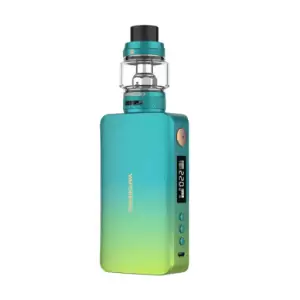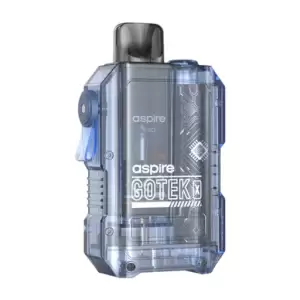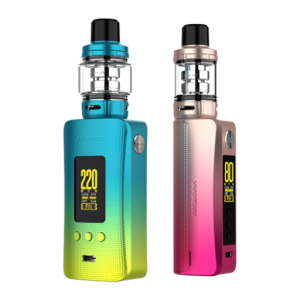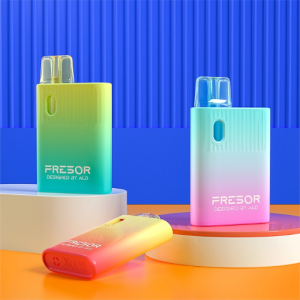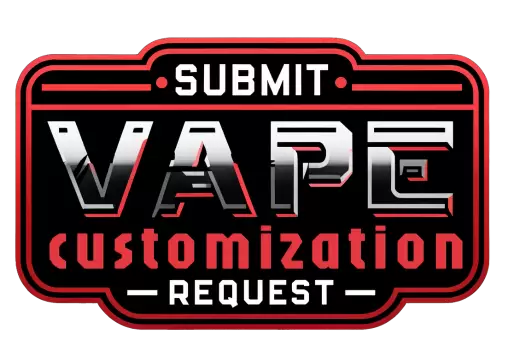Rechargeable disposable vapes have emerged as a popular choice for many vapers, blending the convenience of disposable devices with the eco-friendliness and cost-effectiveness of rechargeable systems. Unlike traditional disposable vapes, these devices allow users to recharge their battery until the e-liquid runs out, thus extending the usage life of the vape and reducing waste.
A rechargeable disposable vape operates on a built-in battery and comes pre-filled with e-liquid. Designed for a set number of puffs, these devices can be recharged with a USB charger, ensuring that users can enjoy the entire volume of e-liquid provided. Brands like Shenzhen Freeton Technologies are at the forefront of integrating advanced battery technologies that not only support longevity but also ensure consistent performance throughout the device’s life.
The performance and lifespan of rechargeable disposable vapes heavily depend on proper charging practices. It’s crucial to follow manufacturer guidelines not only to maximize the device’s life but also to maintain battery health. Dr. Jacklyn Stone, a renowned expert in lithium-ion battery technology, advises, “Using the correct charger and adhering to recommended charging times are essential for maintaining battery integrity and preventing issues like overheating.” This becomes particularly important as improper charging can lead to reduced efficiency and ultimately, device failure.
Common Reasons Why Your Rechargeable Disposable Vape Is Not Charging
One of the most frustrating issues for vapers is encountering a rechargeable disposable vape not charging. This problem can arise from several factors, which can typically be traced back to either the device’s battery, the charger, or the charging port. Understanding these common culprits can help users quickly identify and resolve the charging issues.
Typical Issues Leading to Charging Failures
Battery degradation is one of the primary reasons why a vape might stop charging. Even though rechargeable disposable vapes are designed for short-term use compared to more permanent vaping devices, their batteries can still suffer from wear and tear after repeated charging cycles. Battery degradation affects the battery’s ability to hold a charge, reducing its efficiency over time.
Another prevalent issue is the use of faulty chargers. Many users often use chargers that are not compatible with their devices or are of inferior quality, which not only fails to charge the device but might also harm the battery’s lifespan. It’s important to use the charger provided by the manufacturer or a compatible one recommended by trusted vendors like Shenzhen Freeton Technologies.
How the “Rechargeable Disposable Vape Not Charging” Problem is Commonly Manifested
The issue often presents itself through a vape that refuses to power up despite being plugged in or a battery that depletes unusually fast. In some cases, the LED indicator on the vape, which typically shows charging status, might not light up or might blink erratically, indicating a failure in recognizing the power source. According to a study published in the “Journal of Power Sources,” irregular LED indicators can often signify internal electrical failures, which are common in poorly manufactured rechargeable batteries.
By being aware of these typical issues, users can better troubleshoot their devices or decide when it might be time to contact customer support or consider a replacement.

Inspecting the Vape Charger and Connection
Proper inspection of the vape charger and its connection is essential to solving the issue of a rechargeable disposable vape not charging. This involves checking both the physical components and the electrical functionality to ensure that all connections are secure and functioning correctly.
Step-by-step Guide on Examining the Charger and USB Port
- Inspect the Charger: Begin by examining the charger itself. Look for any visible signs of damage such as frayed cables, loose connections, or bent prongs. A damaged charger should be replaced immediately to avoid further damage to the vape or potential safety hazards.
- Check the USB Port: Examine the USB port on the vape for any debris, lint, or corrosion. These can obstruct the connection, preventing the charger from making a proper contact. Use a small, soft brush or a blast of compressed air to gently clean the port.
- Test the Charger’s Functionality: If possible, try using the charger with another device to see if it works. This can help determine whether the issue lies with the charger or the vape itself.
- Verify the Connection: Plug the charger into the vape and ensure that it is firmly connected. Sometimes, simply repositioning the charger or ensuring that it is fully plugged in can resolve the charging issue.
Tips for Ensuring a Good Connection
- Use the Correct Charger: Always use the charger that came with your vape or one that is specifically recommended by the manufacturer, such as those from Shenzhen Freeton Technologies. Using the correct charger reduces the risk of damaging the battery or the device.
- Avoid Third-Party Chargers: Third-party chargers can vary in quality and may not always meet the specific power requirements of your device. This discrepancy can lead to poor charging performance or even damage to the device.
- Regular Maintenance: Regularly check and maintain both the charger and the charging port. Keeping these components clean and free from damage is crucial for ensuring effective charging and prolonging the life of your vape.
By following these steps and tips, users can often resolve common charging issues themselves without needing to seek professional help. Ensuring that both the charger and the connection are in good working order is a vital part of troubleshooting a vape that won’t charge.
Battery Care and Maintenance for Vape Devices
Proper care and maintenance of the battery are essential for ensuring the longevity and reliable performance of rechargeable disposable vapes. By following best practices and understanding how to preserve battery health, users can maximize the lifespan of their devices and minimize the risk of encountering issues such as a rechargeable disposable vape not charging.
Best Practices for Extending Battery Life
- Avoid Overcharging: Overcharging the battery can lead to premature degradation and reduced battery life. Once the battery is fully charged, promptly disconnect the charger to prevent overcharging.
- Optimal Charging Conditions: Charge the vape at room temperature or within the recommended temperature range specified by the manufacturer. Charging in extreme temperatures can damage the battery and affect its performance.
- Regular Use: Regularly using and discharging the battery helps maintain its health and capacity. Avoid leaving the vape unused for extended periods, as this can lead to battery depletion or deterioration.
- Proper Storage: When storing the vape for an extended period, ensure that it is powered off and stored in a cool, dry place away from direct sunlight. Additionally, store the device with a partial charge rather than fully depleted or fully charged to prevent stress on the battery.
Understanding Battery Cycles and Storage Tips
- Battery Cycles: Lithium-ion batteries, commonly used in rechargeable vapes, have a finite number of charge cycles before their capacity begins to degrade. It’s essential to be mindful of how often the battery is charged and discharged to prolong its lifespan.
- Avoid Deep Discharges: While occasional deep discharges can help recalibrate the battery’s capacity gauge, frequent deep discharges can accelerate battery degradation. Aim to keep the battery charged above 20% whenever possible.
- Storage Tips: If storing the vape for an extended period, aim to keep the battery charge between 40% and 80%. This optimal state reduces stress on the battery and helps preserve its capacity over time.
By adhering to these battery care practices and storage tips, users can maintain the health and performance of their rechargeable disposable vapes, minimizing the likelihood of encountering charging issues and maximizing the lifespan of their devices.
Troubleshooting Steps to Diagnose Charging Issues
When facing the frustrating scenario of a rechargeable disposable vape not charging, it’s essential to undertake systematic troubleshooting steps to identify and resolve the underlying issue. By following these detailed instructions, users can diagnose common charging issues and potentially restore their vape to proper functionality.
Detailed Instructions for Identifying the Issue
- Check the Power Source: Begin by ensuring that the power source, such as the USB port or wall adapter, is functioning correctly. Try plugging the charger into a different outlet or using a different charging cable to rule out any issues with the power source.
- Inspect the Charging Cable and Adapter: Examine the charging cable and adapter for any signs of damage, such as frayed wires or bent connectors. Replace any damaged components with compatible alternatives to ensure a reliable connection.
- Inspect the Vape’s Charging Port: Carefully inspect the vape’s charging port for any debris, dust, or residue that may be obstructing the connection. Use a can of compressed air or a small brush to gently clean the port and remove any obstructions.
- Test with Another Charger: If possible, try charging the vape using a different charger to determine whether the issue lies with the charger or the vape itself. Using a compatible charger from a reputable manufacturer like Shenzhen Freeton Technologies can help ensure optimal charging performance.
- Inspect the Battery: If the vape still fails to charge after trying different chargers, it may indicate a problem with the battery. Contact the manufacturer or authorized retailer for assistance with inspecting or replacing the battery.
How to Reset the Device, if Applicable
Some rechargeable disposable vapes may feature a reset function that can help resolve charging issues. Consult the device’s user manual or contact customer support for instructions on how to perform a reset, if available. Resetting the device can sometimes clear any software glitches or errors that may be preventing it from charging properly.
By systematically troubleshooting the charging issue and following these steps, users can identify the root cause of the problem and take appropriate action to restore their rechargeable disposable vape to proper functionality.
When to Replace Your Vape or Seek Professional Help
Despite your best efforts to troubleshoot and resolve charging issues, there may come a point when it’s necessary to consider replacing your vape or seeking professional assistance. Recognizing the signs indicating that your vape may need replacement or professional intervention is crucial for maintaining a satisfactory vaping experience.
Signs That Your Vape Needs Replacement
- Persistent Charging Issues: If your vape continues to experience charging problems despite trying different chargers and troubleshooting steps, it may indicate underlying hardware issues that cannot be easily resolved.
- Significant Battery Degradation: Over time, the battery in your rechargeable disposable vape may experience degradation, resulting in reduced capacity and performance. If you notice a significant decline in battery life or the ability to hold a charge, it may be time to consider replacing the device.
- Visible Damage or Wear: Physical damage to the vape, such as cracks, leaks, or malfunctioning components, can compromise its functionality and safety. If your vape exhibits visible signs of damage or wear that cannot be repaired, it’s advisable to replace it with a new device.
Information on Warranty and Support Options
If your vape is still under warranty, contact the manufacturer or authorized retailer for assistance with troubleshooting or replacement. Many reputable vape brands like Shenzhen Freeton Technologies offer warranty coverage for their products, ensuring peace of mind for consumers.
Additionally, consider exploring professional repair services offered by authorized vape shops or technicians specializing in vape device repairs. These professionals have the expertise and resources to diagnose and address complex issues with rechargeable disposable vapes, ensuring optimal performance and safety.
Knowing when to replace your vape or seek professional help is essential for maintaining a satisfying vaping experience and ensuring the safety of your device. By staying vigilant and proactive, you can address charging issues promptly and continue enjoying your vaping journey.
Preventive Measures to Avoid Future Charging Issues
Prevention is key to maintaining the longevity and optimal performance of your rechargeable disposable vape. By implementing preventive measures and adopting proper charging habits, you can minimize the risk of encountering charging issues in the future and ensure a smooth vaping experience.
Routine Checks and Maintenance Tips
- Inspect the Charging Port Regularly: Periodically inspect the charging port of your vape for any debris, dust, or residue that may accumulate over time. Use a soft brush or compressed air to clean the port and ensure a reliable connection between the charger and the device.
- Monitor Battery Health: Keep track of the battery health of your vape by paying attention to its charging behavior and overall performance. If you notice any irregularities or decline in battery life, address them promptly to prevent further issues.
- Avoid Overcharging: To prolong the lifespan of the battery, avoid leaving your vape plugged in and charging for extended periods beyond the recommended charging time. Disconnect the charger once the battery is fully charged to prevent overcharging.
Recommendations for Using and Charging the Vape
- Follow Manufacturer Guidelines: Adhere to the charging guidelines provided by the manufacturer of your rechargeable disposable vape. Use the recommended charger and follow the recommended charging times to ensure optimal battery performance and longevity.
- Avoid Extreme Temperatures: Exposure to extreme temperatures, both hot and cold, can negatively impact the battery life and performance of your vape. Store your device in a cool, dry place away from direct sunlight and heat sources when not in use.
- Practice Safe Charging Habits: When charging your vape, place it on a stable surface away from flammable materials and ensure proper ventilation to prevent overheating. Avoid charging your vape overnight or unattended to reduce the risk of accidents.
By incorporating these preventive measures into your vaping routine, you can proactively address potential charging issues and maintain the reliability and safety of your rechargeable disposable vape for long-term enjoyment.
Conclusion
In conclusion, troubleshooting a rechargeable disposable vape not charging can be a frustrating experience, but by following the outlined steps and recommendations, users can effectively diagnose and address common charging issues. From inspecting the vape charger and connection to practicing proper battery care and maintenance, each step plays a crucial role in ensuring the optimal performance and longevity of your device.
It’s essential to recognize the signs indicating when it may be time to replace your vape or seek professional assistance. By staying vigilant and proactive, users can maintain a satisfying vaping experience while ensuring the safety and reliability of their rechargeable disposable vapes.
Remember to follow manufacturer guidelines, use quality chargers, and adopt safe charging habits to minimize the risk of encountering charging issues in the future. With proper care and attention, you can continue enjoying your vaping journey with confidence and peace of mind.
For additional support or guidance, don’t hesitate to reach out to the manufacturer or authorized retailers for assistance. Together, we can navigate through any challenges and ensure that your vaping experience remains enjoyable and hassle-free.
FAQs: Common Questions About Rechargeable Disposable Vape Not Charging
- Why is my rechargeable disposable vape not charging?
- There could be several reasons why your vape is not charging, including battery degradation, faulty chargers, or issues with the charging port. It’s essential to inspect these components and troubleshoot the problem accordingly.
- How can I prevent my vape from encountering charging issues?
- To avoid charging issues, follow manufacturer guidelines, use quality chargers, and practice safe charging habits. Regularly inspect the charging port and battery health, and avoid exposing your vape to extreme temperatures.
- Can I use any charger to charge my vape?
- It’s recommended to use the charger provided by the manufacturer or a compatible one recommended by trusted vendors like Shenzhen Freeton Technologies. Using the correct charger helps ensure optimal charging performance and battery health.
- What should I do if my vape still won’t charge after troubleshooting?
- If your vape continues to experience charging issues despite troubleshooting, consider contacting the manufacturer or authorized retailer for assistance. It may be necessary to replace the device or seek professional help.
- Is it safe to leave my vape charging overnight?
- It’s generally not recommended to leave your vape charging overnight or unattended. Overcharging can lead to battery degradation and safety hazards. Disconnect the charger once the battery is fully charged to prevent overcharging.
- How often should I clean the charging port of my vape?
- It’s a good practice to regularly inspect and clean the charging port of your vape to ensure a reliable connection. Depending on usage, aim to clean the port every few weeks or as needed to remove any debris or residue.
References
“Understanding the Evolution of Rechargeable Disposable Vapes”
“The Rise of Rechargeable Disposable Vapes: A Comprehensive Review”
“Advantages and Limitations of Rechargeable Disposable Vapes: A Comparative Analysis”
“Battery Technology Innovations in Rechargeable Disposable Vapes”
“A Review of Rechargeable Disposable Vape Brands: Market Trends and Consumer Preferences”


